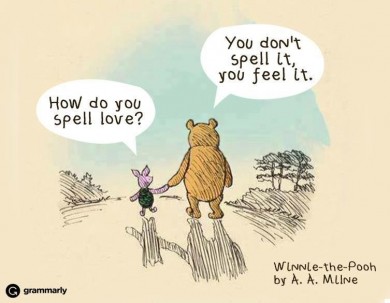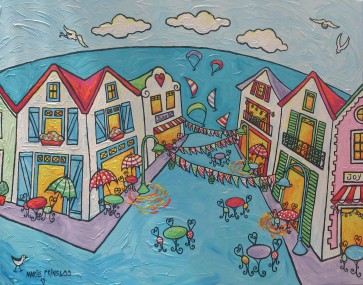
TREATMENT PLAN
TREATMENT PLAN
OVERALL GOAL:
To address attachment concerns, reduce attachment insecurities, and foster the creation of a secure bond (Johnson, Creating Connections, p21)
OVERALL TASKS:
- The creation and maintenance of a consistent positive therapeutic alliance with both partners.
- The accessing and reprocessing of emotional experience.
- The restructuring of interactions.
STAGE 1, STEP 1
- GOAL: To create an alliance where both partners feel safe and accepted by the therapist
MEASURABLE: client’s report of feeling safe, client’s ability to disclose how he experiences the therapeutic process and his ability to collaborate on treatment goals as evidenced by his participation during the sessions, client giving three examples of the problem areas, client committed to therapy as evidenced by attending weekly for 3 weeks, express vulnerable moments in past 3 weeks, client making eye contact 4 times a session, clients report they are feeling safe and are able to trust.
INTERVENTIONS: attending to the tasks that are important for clients, understanding clients perception of the problem, therapist responding and being accessible to clients, creating a safe environment for clients to explore their distress, working through paperwork and explaining EFT, by identifying and articulating the problematic cognitive-affective processes underlying and generating symptomatic experience, open discussion of history seeking treatment, attend and actively participate in conjoint sessions with partner
- GOAL: To assess each partner’s goals and agendas for therapy and to ascertain whether these goals are feasible and compatible with partner’s agendas and therapists skill level, and the nature of the therapy / To assess the nature of the problem and the relationship, including its suitability for therapy in general and EFT in particular
MEASURABLE: clients completing the forms: Initial assessment questionnaire; Couple Satisfaction Checklist;Individual Problem Checklist; The Couple Screening Form and the DAS.
INTERVENTIONS: attending to the tasks that are important for clients, understanding clients perception of the problem, therapist responding and being accessible to clients, creating a safe environment for clients to explore their distress, working through paperwork and explaining EFT, by identifying and articulating the problematic cognitive-affective processes underlying and generating symptomatic experience, open discussion of history seeking treatment, attend and actively participate in conjoint sessions with partner
- GOAL: To create a therapeutic agreement between the couple and therapist, a consensus as to therapeutic goals and how therapy will be conducted
MEASURABLE: evidenced in clients and therapist writing down one agreed upon goal for therapy on a form that is signed and placed in chart.
INTERVENTIONS: By utilizing assessment forms, by using reflection, validation and tracking, understanding clients perception of the problem, therapist responding and being accessible to clients, creating a safe environment for clients to explore their distress.
- GOAL: To complete assessment of safety and contraindications for therapy
MEASURABLE: by clients attending individual sessions, by completing handouts such as the Couples Satisfaction Checklist, the Individual problem checklist, client signing informed consent, agreeing to no-secrets policy
INTERVENTIONS: Looking at contraindications, discussing no-secrets policy, by asking about the presence of abuse, affairs and addiction, by providing individuals sessions to assess for abuse, affairs and addiction, by discussing the modality of treatment offered, by providing a handout on EFT, assessing for trauma
STAGE 1, STEP 2
- GOAL: To enter into the experience of each partner and sense how each constructs their experience of this relationship.
MEASURABLE: Assess for view of self and other, their description of their action tendencies
- GOAL: To begin to make hypotheses as to the vulnerabilities and attachment issues underlying each partner’s position in the relationship.
MEASURABLE: Client agrees to attachment desires such as wanting to matter
INTERVENTIONS: Empathic conjecture
- GOAL: To track and describe the typical recurring sequences of interactions that perpetuate this couple’s distress and to crystallize each partner’s position in the interaction.
MEASURABLE: Cycle sheet is completed, couple will complete the “When we are not getting along sheet”
- GOAL: To begin to understand how the present relationship evolved and what prompted the couple to seek therapy.
MEASURABLE: Clients will each share the story of their relationship
- GOAL: To begin to hypothesize as to the blocks to secure attachment and emotional engagement within and between partners and to explore these.
MEASURABLE: Complete relationship history and assessment for attachment history and attachment injuries
- GOAL: To sense how this couple responds to interventions and how easy or difficult the process of therapy is going to be.
MEASURABLE: Each person in couple takes responsibility for the problems in the relationship as evidenced by the statement … “ I know I…”
- GOAL: Partners will recognize the cycle that is keeping them emotionally distant and try to identify the needs and fears fueling that cycle.
MEASURABLE: clients being able to talk about the latest incident of this problem area, identify a trigger to the latest argument, client naming one negative perception they are having during moments of disconnection, one secondary, one primary and one action tendency, the clients ability to recognize triggers, to recognize and report the negative thoughts including ‘I am stupid, I don’t measure up, I am a failure’ to recognize the emotions of ‘fear, sadness, helplessness and shame’ that underly the cycle, by naming three examples of the problems area in the relationship, by the emotional pattern between the couple becoming explicit within session and cycle sheet being filled out completely and placed in file.
INTERVENTIONS: listening and exploring the client’s narrative about the problem, by identifying and articulating the problematic cognitive-affective processes underlying and generating symptomatic experience, tracking, reflection, validation
STAGE 1, STEP 3
- GOAL: Access the primary emotions that are usually excluded from individual awareness and no explicitly included in the partners’ interactions.
INTERVENTIONS: Actively engaging and focussing on the emotional experience that is occurring in the here and now, expanding the experience, Acknowledge and validate the secondary responses, but then engage the client in the process of exploring specific experiences and eliciting the emotions that are disowned,discounted, or avoided, focus on emotion implicit in nonverbal behavior, when one partner exhibits nonverbal behavior that is in response to the other that is noteworthy due to its incongruity, intensity,or effect on the interaction, redirect the process in the session back when the cycle takes over and help the partner engage more in exploration of experience, have an open stance towards the person often by leaning forward, a slower speaking pace that usual and longer pauses, a lower and softer voice, simple, concrete words, often images and using the clients words, validation, evocative reflections and questions are designed to open up and expand each partner’s emotional experience of the relationship, heightening intensifies crystallizes emotional responses, empathic conjecture expands present process
- GOAL: Use the primary emotional responses and the attachment needs reflected by these responses, to expand the context of the couple’s problems.
INTERVENTIONS: expanding the experience, reprocessing the experience with discovery and creation so that new aspects of experience are encountered, by asking permission to stay longer, by asking where in the body the client feels the emotion, by asking what thought is linked to the feeling, by asking what behavior is linked the emotion, by asking what words the feeling has to say, by using therapist self-disclosure to let client see impact on therapist, by normalizing and validating the emotion
- GOAL: Access the unacknowledged emotions underlying the interactional positions, Partners will articulate the emotions behind their behaviour, accessing underlying attachment affect
- Client will be able to identify the fear she has when she thinks about socially awkward interactions she has
- Client states that she feels small and naked when she asks him for help, and so instead she communicates in anger because it makes her feel bigger. Client cries as she explains that….
MEASURABLE: and to share these emotions in sessions by session 5 at least once a session, to identify, name and talk about the fear once per session, by each partner or a client identifying and expressing and coming in contact with their primary emotions fueling secondary reactive behaviors two times per sessions,
INTERVENTIONS: observing and attending to the client’s style of processing emotion, identify and respond to the painful aspects of clients experience, Empathic reflection, Validation of emotions and realities, Evocative questioning and responding, Heighten and expand, Empathic interpretation and conjecture, Track and reflect process, focus on one person’s position in the interaction and how this person experiences the other and his own emotions in this interaction
STAGE 1, STEP 4
GOAL: Frame the couple’s problem in terms of the way the couple interact and the emotional responses that organize such interactions.
GOAL: Increase couples awareness of their own role in the conflict and decrease pursuit withdraw/ withdraw – withdraw/ attack – attack cycles
MEASURABLE: Increase awareness of own role in relationship conflicts, evidenced by 2 less critical behaviors per week, fewer conflicts
- withdrawn partner is perceived now not so much as indifferent or uncaring, but rather as withdrawing as protection from the enormous impact of the other’s actions
GOAL: Reframe the problem in terms of underlying emotions and attachment needs.
MEASURABLE: Client will recognize negative cycle as the common enemy. Partners will realize that they are both hurting and that neither is to blame. Partners will begin to acknowledge and accept the other’s feelings and their own new responses to those feelings, a clear picture of their negative interaction cycle as the enemy blocking them,
- withdrawn partner is not talking in session about his paralysis in the face of his wife’s criticism, rather than just going numb and silent. Wife is still angry, but as actively hostile as before and is beginning to talk of her hurt.
INTERVENTIONS: by assigning couple a between session task noticing when moments of disconnection happen, and in what they contribute to, maintain or end the disconnection, by using attachment language and eliciting motivations behind behavior, staying with primary emotions for long enough for unmet needs to emerge and come into awareness,
GOAL: Couple has formulated a coherent and meaningful picture of the patterns that define their relationship, as well as of how they create them.
GOAL: Partners are engaged in a new kind of dialogue about emotions, attachment issues, and cycles, and how these all go together, are beginning to be emotionally engaged with each other in the therapy sessions.
STAGE 2, STEP 5
GOAL: Emotions accessed in step 3 are experienced more fully and related to the way each partner perceives self and other in the relationship
MEASURABLE: To acknowledge and express to spouse that hostile approaches produces feelings of inadequacy, owning and acceptance of…acknowledged and share with partner client will be able to, to express the impact partner’s behavior has on them in a personal and vulnerable way, show an understanding of their intrapsychic experience and share, talk with partner vulnerable twice in session attachment fears, client will be able to articulate attachment longings and desires
INTERVENTIONS: Empathic reflection, Validation of emotions and realities, Evocative questioning and responding, Heighten and expand, Empathic interpretation and conjecture, directive an enactment
GOAL: Previously unformulated or avoided experience is encountered, claimed, and congruently expressed to the partner.
- previously withdrawn husband, who generally avoids the anxious feelings elicited by his wife’s comments, now fully experiences and states his fear of her criticism.
INTERVENTIONS: Redirect the process, and if necessary, block the other partner’s interference.
GOAL: Partners own and take possession of their emotional experience of the relationship
- withdrawn husband professes his fear and, in the process, accesses and expresses his unfulfilled need and longing for acceptance.
MEASURABLE: Withdrawn partner is able to explain what is happening in the relationship, in a congruent manner “I feel so small, so I back off and go away”
INTERVENTION: Orient the individual to his/her needs in the relationship
GOAL: Person will reach a sense of closure or synthesis of his/her underlying emotion and clearly relate this experience to the partner, with the focus of sharing on self.
GOAL: Attachment longings and desires begin to be clearly articulated.
STAGE 2, STEP 6
GOAL: Support the other partner to hear, process, and respond to to Step 5, so that this new experience can become part of, and begin to reshape, the couple’s interactions.
MEASURABLE: Receiving partner will be responsive to Step 5
INTERVENTIONS: Evocative responding: expand the felt sense of an emotional experience with questions and reflections, and expand the formulation/meaning of the experience and how it organizes the response, heighten emotional responses to make them more alive and present, empathic conjecture, restructuring interactions by choreographing enactments
GOAL: To help partner deal in a constructive way with partner’s new behavior and expression of fears.
MEASURABLE: Spouse articulate acceptance of partner’s newly shared vulnerability, will sit and listen attentively for 2 minutes while partner shares, will reach out and touch partner, will share a positive effect of hearing partners experience
INTERVENTION: Contain any effects of the initial discounting of the partner’s new response by the distressed other, supporting the other in his/her confusion at encountering this “new” spouse.
STAGE 2, STEP 7
GOAL: To create emotional engagement and bonding events that redefine the attachment by facilitating the partners formulation and expression of needs and wants to one another
MEASURABLE: Partners are able to clearly state what they need in order to feel safe and connected evidenced by requests made being about contact and comfort instead of about other less emotionally central aspects of the relationship, requests are asked instead of demanded or stated in a blaming context, Partners are able to present their specific requests in a manner that pulls the spouse toward them and maximizes the possibility that this spouse will be able to respond because the attachment signals are clear.
INTERVENTIONS: Evocative responding, empathic conjecture, tracking and reflecting the cycle reflecting the beginnings of a new and positive cycle, reframing, restructuring interactions
GOAL: Achieve withdrawer reengagement
MEASURABLE: Withdrawer is aware of attachment related fear and shame, is able to elaborate on his emotional reality, engages with emotions rather than avoids then, present in interactions rather than elusive, seeking rather than avoiding connection – 1 time in week, partner will talk about partner more positively
INTERVENTIONS: Evocative responding, empathic conjecture, tracking and reflecting the cycle reflecting the beginnings of a new and positive cycle, reframing, restructuring interactions
GOAL: Achieve blamer softening
MEASURABLE: Pursuer is aware of attachment related fear and shame, is able to elaborate on emotional reality, engages with emotions rather than blaming then, present in interactions rather than elusive, seeking rather than blaming – 1 time in week, partner will talk about partner more positively
INTERVENTIONS: Evocative responding, empathic conjecture, tracking and reflecting the cycle reflecting the beginnings of a new and positive cycle, reframing, restructuring interactions
STAGE 2, STEP 8
Facilitate the emergence of new solutions to old relationship problems.
Partners own their own part in, or perspective on, the pragmatic issues in the relationship.
INTERVENTION: support the re-engaging initiatives and help the partner to be open and respond to these actions
STAGE 2, STEP 9
GOAL: Consolidate new positions/cycles of attachment behaviors.
MEASURABLE: positive interactions are more apparent but both reveal vulnerabilities and respond in caring ways to the other
INTERVENTIONS: Reflect and validate new patterns and responses, evocative responding, reframing, restructuring interactions
The couple will construct an overview of the therapy process and appreciate the changes they have made
Couple will construct a coherent and satisfying narrative that captures their experience of the therapy process and their new understanding of the relationship
Couple can articulate future dreams and goals for the relationship
Address issues of termination






